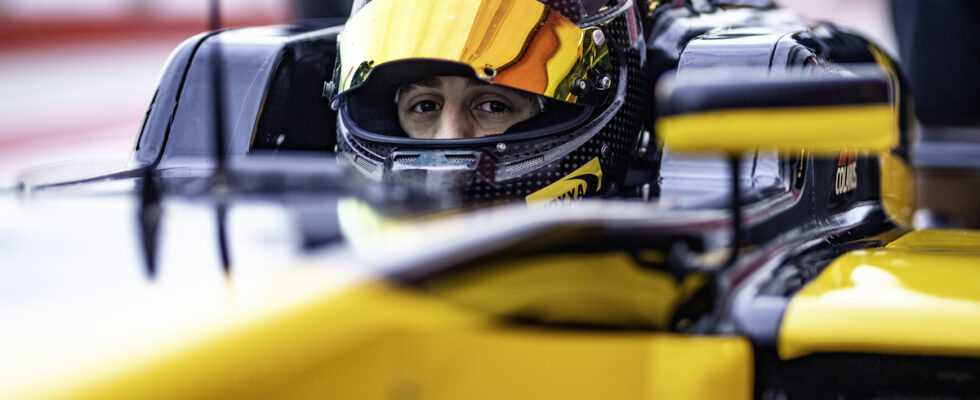During the last season of Formula 1 (F1), the teams saw their budget capped at 140 million dollars per team, against 145 million previously. A drop in expenses synonymous with tightening screws for the various teams in the running, called to put even more emphasis on profitability and resource management than ever before. What lead the latter to compete in inventiveness to perfect their technology and ensure their supremacy on this critical point for their success… Or their failure.
Every team approaches the cost cap challenge differently, but here are some of the ways F1 teams are using technology to save money this season, from factory to paddock and race start line. Grand Prizes.
Alpha Tauri
AlphaTauri engineers chose to use Epicor’s Kinetic system to analyze production data and create part simulations in hopes of minimizing the number of materials used. Through the use of a data management provider, the team (ex-Toro Rosso) claims that it can automatically render a complete schematic structure or deliver a digital twin of its racing cars.
By having these renderings available, AlphaTauri can anticipate and eliminate unforeseen financial costs, such as over-ordering components or wasting materials. This eliminates any unnecessary expense. “The team also has granular visibility into the machine, operator, and tools used to manufacture each part, enabling the development of cost analysis models that inform purchasing or sale, as well as to quickly correct any production problem before arriving on the track”, further explains Giovanni Cattarina, one of the team’s engineers.
Having these renders in hand also allows AlphaTauri to quickly determine which part of the vehicle is underperforming when analyzing a recently completed race to bolster its real-time logistics and shave valuable seconds off the finishing line.
Red Bull Racing
Whether it’s manufacturing the parts or the race itself, investing in improved virtual technology – renderings, digital twins and simulations – seems to be the main focus for teams to be competitive in the within a limited budget.
Red Bull, the manufacturer’s vice-world champion team last year where reigning world champion Max Verstappen officiates, is counting on its collaboration with Oracle to increase the number of racing simulations by more than 1,000 times that she can perform. Thanks to this winning partnership, the speed of the team’s simulations has increased tenfold over the past season, meaning that Red Bull’s race strategists now have more time to improve the accuracy of their predictions to to make the right decisions.
Asking a supplier, such as Oracle, to perform simulations, however, requires a lot of time and energy, which leads to significant costs. For this past season, one of the ways Red Bull has cut costs has been to limit the time spent using the cloud to run simulations, says Zoe Chilton, Head of Partnerships at Red Bull.
“If you’re running an on-premises data center, it has to be on all the time – you’re consuming a lot of power, they’re consuming a lot of resources. In fact, what [Red Bull] needs is massive computing power that we can turn on for the duration of the race weekend and then turn off for the rest of the week because we don’t need it to be permanently available for this very specific task”, indicates the latter.
“In those kinds of cases, we’re seeing really impressive efficiency gains and the ability to use the cloud for those very specific simulation tasks. And wherever there’s efficiency, there’s going to be an advantage, there are going to be cost savings, and obviously environmental improvements as well.”
McLaren
McLaren’s head of business technology, Edward Green, for his part, stresses the importance of maximizing digital twins to succeed under a budget cap. From creating driver simulations, to component development, and even all the way to factory design, McLaren has integrated digital twins to maximize the efficiency of these processes.
“The digital twin is used in our simulator. After each race, the drivers come back and re-do the course of the race they just finished, which may seem strange, but it helps us to better calibrate their reactions and their understanding of the data from the car”, explains the engineer. “The digital twin is then also used for the development of the parts. We can run simulations, whether it’s aerodynamic degradation or tire degradation. We run physical simulations against a virtual model of the car” .
“Thanks to the digital twin, you can really understand what’s going on with the car at all times.” Beyond using virtual technology to cut costs and come up with minor improvements, the team is also emphasizing the creation of rapid prototypes to cost-effectively study larger and more expansive improvements for his vehicles.
“Sometimes this rapid prototyping can help determine how a part is made as a whole, or how it relates to other surfaces in the car, and so you can create or 3D print those parts very quickly. the faster you do that, the faster you win the behind-the-scenes race for parts development,” says Edward Green.
At the last Grand Prix in Australia, the use of this technology gave excellent results for some teams, but not for others. Red Bull driver Sergio Perez made it to the podium while teammate Verstappen retired with engine issues. Meanwhile, the McLaren and AlphaTauri drivers all placed lower in the field, from fifth to fifteenth.
Source: ZDNet.com
